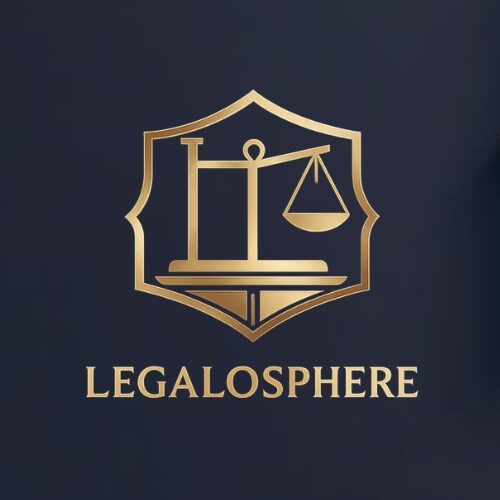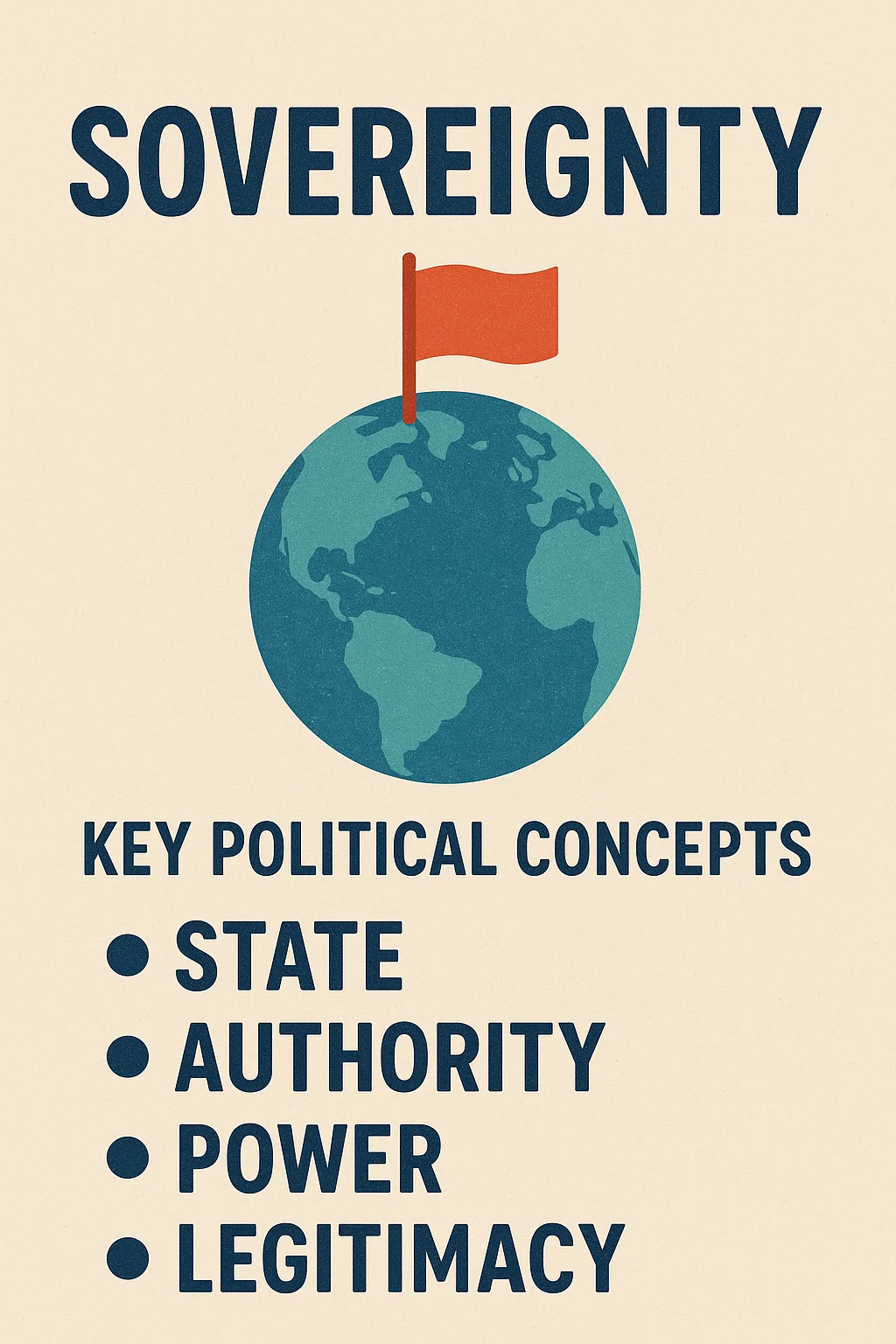Sovereignty: The Core of State Power
In the world of political theory, few ideas are as central—and as contested—as sovereignty. It’s the heart of the state, the symbol of supreme authority, and the ultimate justification for governance. But while sovereignty might sound like a simple concept—the ability of the state to rule over its territory without external interference—its layers are anything but simple.
Sovereignty is what gives a state the power to create laws, enforce them, raise taxes, conduct foreign policy, and even declare war. It’s what makes a state “sovereign”—self-contained, self-ruling, and independent. Yet in a world of globalization, international law, and interconnected economies, sovereignty is no longer as absolute as it once seemed.
Let’s unpack what sovereignty means, how different thinkers have interpreted it, and why it continues to matter in today’s complex political world.
Definition and Attributes of Sovereignty
At its core, sovereignty refers to the ultimate authority within a given territory. Jean Bodin, a 16th-century French political thinker, gave one of the earliest and clearest definitions: sovereignty is “the absolute and perpetual power of a commonwealth.” Later thinkers like Thomas Hobbes and John Austin refined this further, emphasizing that sovereignty is the final source of law and command in society.
Key attributes of sovereignty include:
Absoluteness: Sovereignty is not divided. There is no authority above it within the state.
Permanence: While governments may change, sovereignty remains intact.
Indivisibility: Traditional theorists argued that sovereignty cannot be split among different institutions.
Comprehensiveness: Sovereignty applies to all matters within the state’s jurisdiction—legal, military, economic, and political.
Inalienability: Sovereignty cannot be transferred or surrendered.
However, in the modern era, these attributes are increasingly challenged. International treaties, human rights laws, global financial systems, and even social media platforms all seem to chip away at the state’s “absolute” authority.
Despite this, sovereignty remains the bedrock of international relations. It determines who has the right to govern, who can make treaties, and who gets a seat at the United Nations. In essence, sovereignty defines what it means to be a legitimate political actor on the world stage.
Monistic Theory of Sovereignty
The monistic or legalistic theory of sovereignty argues that there is one supreme, undivided authority in the state. This view is most strongly associated with John Austin, a 19th-century English legal theorist. According to him, sovereignty lies with the entity that issues the final commands and whose commands are obeyed by the majority.
Core principles of the monistic theory:
Single locus of power: There can be only one sovereign in a state—whether that is the monarch, the parliament, or the people.
Supremacy of law: Sovereignty is the source of all legal rules and cannot be bound by laws.
No division of sovereignty: Federal systems, where authority is shared between central and regional governments, are problematic in this theory.
Unquestionable obedience: Citizens must obey the sovereign’s commands, or else order breaks down.
The monistic theory is elegant in its simplicity but limited in its realism. In modern democracies, power is divided among branches of government—executive, legislative, and judiciary—making it hard to pinpoint a single sovereign. Moreover, the people are often considered the ultimate sovereign in democratic systems, which complicates the idea of undivided authority.
Still, the monistic theory is foundational in understanding the development of constitutional law, especially in centralized nation-states and autocratic regimes.
Pluralistic Theory of Sovereignty
Reacting against the rigidity of the monistic view, the pluralistic theory argues that sovereignty is not—and should not be—concentrated in a single authority. Instead, it is dispersed among various social institutions that hold legitimate power within the state.
Key advocates of pluralism include Harold Laski and G.D.H. Cole, who viewed the state as just one among many associations—alongside the church, trade unions, corporations, and local communities—that wield influence over people’s lives.
Core ideas of pluralistic sovereignty:
Multiple centers of power: Sovereignty is shared among various groups and institutions.
Checks and balances: Power must be balanced to prevent tyranny or domination.
Voluntary association: Individuals are part of many groups, and loyalty is divided.
State is not supreme: The state is one association among many; it should not claim absolute authority over others.
Pluralistic theory is especially relevant in modern liberal democracies, where civil society, media, judiciary, and even NGOs play vital roles. It also aligns with federalism, where sovereignty is constitutionally divided between central and sub-national governments.
Critics of pluralism argue it dilutes authority and can lead to disorder or inefficiency. However, supporters see it as a necessary reflection of social complexity and a safeguard against authoritarianism.
Philosophical Interpretations
Beyond legal and political theories, sovereignty has also been a subject of philosophical reflection. Thinkers have debated not only who should be sovereign but also why sovereignty exists and what it means for individual freedom, justice, and moral duty.
Hobbes believed in absolute sovereignty as a means to escape the “state of nature,” a chaotic condition where life was a war of all against all.
Locke, on the other hand, argued for popular sovereignty based on a social contract—people consent to be governed but retain fundamental rights.
Rousseau introduced the idea of the “general will,” where sovereignty lies with the collective desires of the people, not with any ruler or institution.
Hegel saw the state as the embodiment of ethical life, where sovereignty is expressed through rational institutions.
In more recent times, Michel Foucault challenged the very foundations of sovereignty, arguing that modern power operates through dispersed networks—schools, hospitals, prisons—not just through the state.
These interpretations show that sovereignty is not just a matter of who rules, but how power is conceptualized, legitimized, and exercised.
Liberty, Equality, and Rights
No discussion of sovereignty is complete without touching on the triad of liberty, equality, and rights—core political concepts that define the relationship between the individual and the state. These ideas have shaped revolutions, constitutions, and legal systems across the globe. While sovereignty deals with the authority of the state, liberty, equality, and rights focus on the limits of that authority—ensuring that state power doesn’t trample on human dignity or autonomy.
These concepts are often in tension. Too much liberty can undermine equality. Excessive emphasis on equality can restrict liberty. Rights, meanwhile, can be both tools of empowerment and sources of conflict. Let’s unpack each one in detail.
What is Liberty? Negative and Positive Liberty
Liberty is one of the most cherished and debated political values. At its core, liberty is about freedom—freedom from interference, freedom to act, think, speak, and live as one chooses. But not all freedoms are the same. Political theorists distinguish between two main types of liberty: negative and positive.
Negative Liberty
Coined by philosopher Isaiah Berlin, negative liberty refers to freedom from interference. It’s the absence of constraints or coercion from others—especially the state. If no one is stopping you from doing something, you’re considered free in the negative sense.
Examples: Freedom of speech, freedom of religion, freedom of movement.
Philosophical basis: Rooted in classical liberalism; thinkers like John Locke and Adam Smith emphasized minimal state interference.
Criticism: Negative liberty doesn’t account for social and economic inequalities that limit real choices. For instance, what good is the freedom to attend college if you can’t afford tuition?
Positive Liberty
Positive liberty is the freedom to achieve your potential. It’s not just about being left alone but having the means and capacity to act on your free will.
Examples: Access to education, healthcare, social services.
Philosophical basis: Promoted by modern liberals and socialists. Thinkers like Rousseau and T.H. Green argued that freedom means empowerment, not just non-interference.
Criticism: Positive liberty can justify paternalism or state control, as governments may claim to “know what’s best” for citizens.
In reality, most democratic societies seek a balance. They protect negative liberties through rights and constitutions while promoting positive liberties through public policy and welfare programs. The tension between the two forms of liberty remains a central debate in modern political discourse.
Understanding Equality: Political, Social, and Economic
Equality is the idea that all human beings have the same intrinsic value and deserve the same treatment. But equality is not a one-size-fits-all concept. It has many dimensions—political, social, and economic—and each plays a unique role in shaping society.
Political Equality
This is the cornerstone of democracy. It means every citizen has the same legal rights and an equal voice in political decision-making.
Examples: One person, one vote; equal protection under the law.
Challenges: Voter suppression, unequal political influence from wealth or lobbyists can undermine political equality.
Social Equality
Social equality concerns equal status in society and equal access to opportunities regardless of race, gender, caste, religion, or ethnicity.
Examples: Anti-discrimination laws, inclusive education.
Challenges: Deep-rooted prejudices and systemic discrimination continue to exist in many societies.
Economic Equality
This is perhaps the most contested form of equality. It refers to a fair distribution of wealth and resources, as well as access to basic needs like housing, healthcare, and employment.
Examples: Progressive taxation, minimum wage laws, universal healthcare.
Challenges: Capitalist systems often result in wide income disparities, while socialist models face challenges in efficiency and innovation.
Striving for equality doesn’t always mean identical treatment. Sometimes, achieving substantive equality requires differential treatment to level the playing field—such as affirmative action or targeted welfare. The balance between fairness and sameness is a key philosophical and political debate.
Concept of Rights: Legal and Moral Dimensions
Rights are entitlements or claims that individuals can make either against the state or society. They are the practical tools that turn the ideals of liberty and equality into actionable standards. But rights are not all the same—they come in legal and moral forms, and their scope varies widely across cultures and political systems.
Legal Rights
Legal rights are codified in constitutions, laws, and international treaties. They are enforceable through courts and institutions.
Examples: Right to vote, right to a fair trial, property rights.
Nature: These rights are granted and protected by the state. They can be amended or repealed by legislative processes.
Moral Rights
Moral rights are based on ethical principles and universal human dignity. They are not always recognized by law but are often considered fundamental.
Examples: Right to life, right to self-respect, right to love and be loved.
Nature: These are universal and inalienable, meaning they belong to individuals simply by virtue of being human.
Categories of Rights:
Civil Rights: Ensure individual freedom (e.g., freedom of speech, religion).
Political Rights: Facilitate participation in political life (e.g., voting, contesting elections).
Economic and Social Rights: Guarantee economic security and social well-being (e.g., right to work, right to education).
Cultural Rights: Protect cultural heritage and minority traditions.
In democratic societies, a balance between rights and duties is essential. Rights come with responsibilities—respecting others’ freedoms, obeying laws, and contributing to the community. Furthermore, rights often conflict, requiring courts and lawmakers to balance competing claims, such as freedom of speech vs. protection from hate speech.
The concept of rights continues to evolve, particularly in areas like environmental rights, digital rights, and animal rights—showing how our understanding of justice and dignity is expanding with time.
Conclusion
Sovereignty, liberty, equality, and rights are more than academic concepts—they are the living principles that shape political life, define statehood, and structure our interactions as citizens and humans. Sovereignty gives the state its legitimacy and power, but liberty, equality, and rights ensure that power is not abused.
These concepts are dynamic, not static. In an interconnected and rapidly changing world, debates over sovereignty (especially in global governance), liberty (especially in surveillance and censorship), equality (especially amid rising inequality), and rights (especially in emerging digital spaces) are more relevant than ever.
Understanding these principles isn’t just for students of political science—it’s crucial for anyone who wants to be an informed, responsible, and active member of society.

